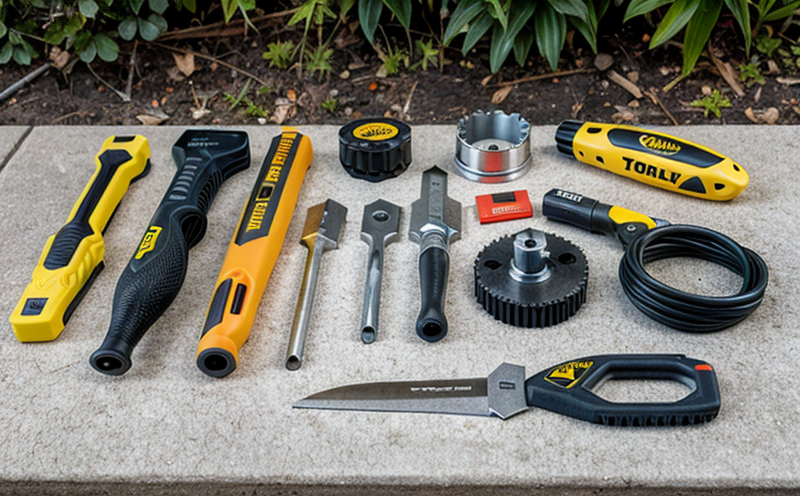Chisel Edge Retention Testing
The Chisel Edge Retention Test is a critical procedure used in the Consumer Products & Product Safety Testing sector to ensure that DIY tools and hardware products, particularly chisels, meet safety standards. This test evaluates the integrity of the cutting edge by assessing its retention capacity when subjected to specific loading conditions.
The test is essential for compliance with various international standards such as ISO 4259 and ASTM E1441. It is particularly relevant for tools that are used in construction, woodworking, and maintenance activities. The test ensures that the chisel remains functional under stress, thereby safeguarding users from accidental injuries.
The primary purpose of this test is to ensure that the cutting edge retains its shape and sharpness after being subjected to a specified load. This measurement helps manufacturers identify any weaknesses in the tool design or material selection. In essence, it guarantees that tools perform as expected while minimizing risks associated with tool failure.
During specimen preparation, chisels are selected based on their intended use and size. The cutting edge is then carefully inspected for burrs or irregularities using a magnifying glass before the test begins. Once prepared, the chisel is mounted in a fixture that allows it to withstand the forces applied during testing.
The test apparatus typically consists of a loading device capable of applying controlled forces perpendicular to the cutting edge. The force application simulates real-world usage scenarios where the tool might encounter resistance or impact. After reaching the predetermined load, the device records the amount of material removed from the cutting edge due to wear and tear.
The acceptance criteria for this test are stringent, focusing on both quantitative and qualitative aspects. A chisel passes if it retains at least 80% of its original edge thickness after undergoing the prescribed loading cycle. Additionally, any visible damage or significant changes in the shape of the cutting edge would result in failure.
Understanding the Scope and Methodology section will provide further insights into how this testing process is conducted:
| Parameter | Description |
|---|---|
| Specimen Preparation | The chisel must be free from burrs and inspected for irregularities. |
| Loading Device | A device capable of applying controlled forces perpendicular to the cutting edge. |
| Force Application | The force is applied until a predetermined load is reached, simulating real-world stress. |
| Data Collection | The amount of material removed and any visible changes in shape are recorded. |
In addition to the above table, here’s an outline of how this testing procedure is carried out:
- Inspect the chisel for defects or irregularities using a magnifying glass.
- Mount the chisel in a fixture designed to withstand applied forces.
- Apply the specified force perpendicular to the cutting edge until reaching the predetermined load.
- Record the amount of material removed and observe any changes in shape.
The Industry Applications section will provide real-world usage notes on where this test is most applicable:
| Application | Description |
|---|---|
| Construction | Ensuring chisels used in construction are safe and effective. |
| Woodworking | Evaluating the durability of chisels used for woodworking tasks. |
| Maintenance | Aiding maintenance teams to select reliable tools that maintain their performance over time. |
| DIY Projects | Guaranteeing the safety and effectiveness of DIY chisels during projects. |
The following list highlights some key industry applications:
- Construction sites where heavy-duty tools are used.
- Woodworking workshops requiring precision in tool performance.
- Maintenance departments needing reliable and safe tools for various tasks.
- DIY enthusiasts looking to ensure their tools meet safety standards.
The next section discusses the importance of quality and reliability assurance:
Quality and Reliability Assurance
Ensuring that chisels perform consistently across all batches is crucial for maintaining product integrity. This involves not only the Scope and Methodology but also continuous monitoring of production processes.
- Regular calibration of testing equipment to ensure accurate results.
- Training personnel involved in specimen preparation and data recording.
- Implementation of a quality control system that includes periodic audits.
The acceptance criteria for this test are critical in ensuring compliance with safety regulations. A chisel passes if it retains at least 80% of its original edge thickness after undergoing the prescribed loading cycle. Any visible damage or significant changes in shape would result in failure.





